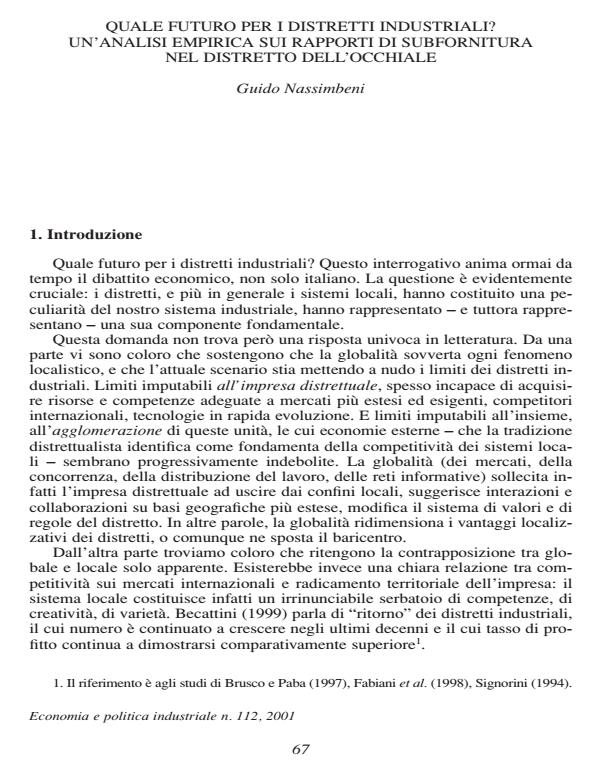Quale futuro per i distretti industriali?
Titolo Rivista ECONOMIA E POLITICA INDUSTRIALE
Autori/Curatori Guido Nassimbeni
Anno di pubblicazione 2002 Fascicolo 2001/112
Lingua Italiano Numero pagine 29 P. Dimensione file 123 KB
DOI
Il DOI è il codice a barre della proprietà intellettuale: per saperne di più
clicca qui
Qui sotto puoi vedere in anteprima la prima pagina di questo articolo.
Se questo articolo ti interessa, lo puoi acquistare (e scaricare in formato pdf) seguendo le facili indicazioni per acquistare il download credit. Acquista Download Credits per scaricare questo Articolo in formato PDF

FrancoAngeli è membro della Publishers International Linking Association, Inc (PILA)associazione indipendente e non profit per facilitare (attraverso i servizi tecnologici implementati da CrossRef.org) l’accesso degli studiosi ai contenuti digitali nelle pubblicazioni professionali e scientifiche
This present study focuses on one of the Italian more important local systems: the eyewear district. On the base of an empirical research, the study analyses the evolution of the eyewear industry, the strategic responses operated by the larger producers to the current competitive challenges, the consequences of such responses for the local supply system. The district in object introduces particular reasons of interest. In the first place, it accommodates more of 80% of sales of the Italian eyewear industry, one of the leading sector of Italian "fashion" system. In the second place, this district is going through a phase of significant transformation. In the past, the district formula enabled the Italian producers to achieve cost advantages and mix and volume flexibility. Today it is difficult for such a formula to satisfy the global market which requires the producers to shorten product development time, produce new models faster and more frequently, and better differentiate the product (especially the quality and design) from that of international competitors, who are stronger in terms of innovation (Japan) and costs (south-east Asia). In regard to these aspects the local system is often inadequate, to such point that various producer are internalising some productions or rationalising the supplier base, so as to achieve a greater control on quality, times and costs of the process. Therefore the district relations and the kind and type of local system involvement is gradually transforming.
Guido Nassimbeni, Quale futuro per i distretti industriali? in "ECONOMIA E POLITICA INDUSTRIALE " 112/2001, pp , DOI: